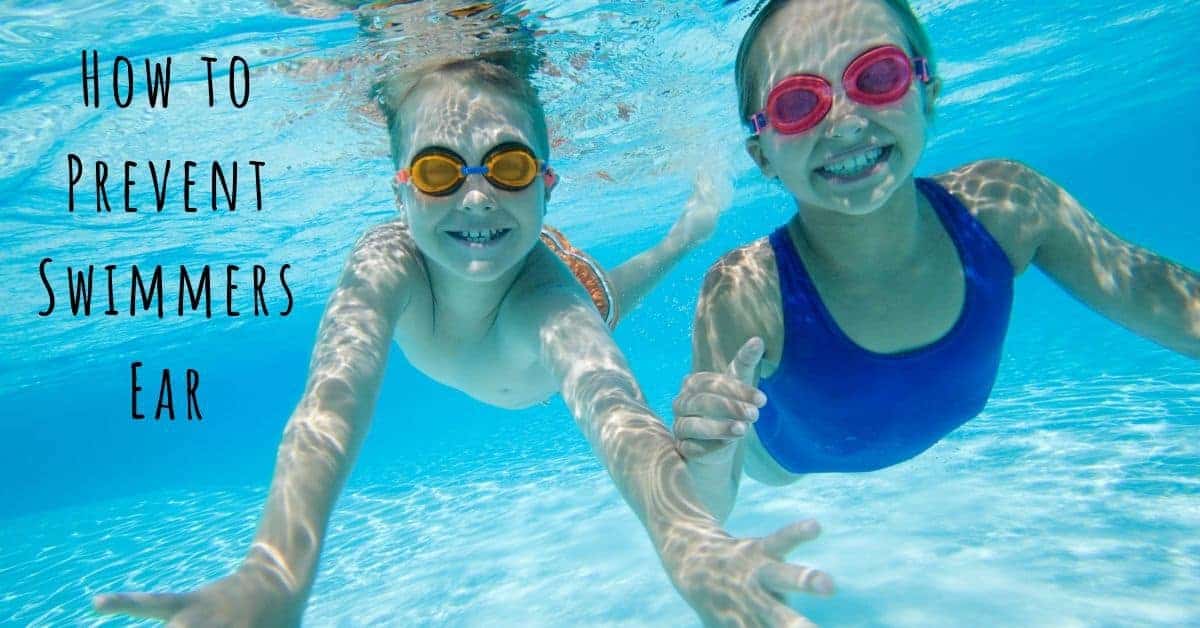Summer is finally here! The kids are out of school, the sun is shining, and BBQ season is in full swing. It’s also the time of the year where we enjoy a refreshing dip in the pool to cool off or kick back with friends and family. Along with the watery fun, swimming can also be the cause of painful swimmer’s ear. If you have experienced this condition, it may make you think twice about that cannonball. Luckily, swimmer’s ear is easily prevented by following simple steps before, during, and after your swim.
What is Swimmer’s Ear?
The medical term for swimmer’s ear is actually otitis externa. Otitis externa is an infection in the ear canal, or the tubing that connects your outer ear with the ear drum. Usually, this condition is caused by a bacterial infection from excess water in the ears, however the condition can also be caused by fungus or even a virus. Symptoms of swimmer’s ear includes: itchiness or pain, difficulty hearing, and/or fluid or pus draining out of the ear. Symptoms of swimmer’s ear can be similar to other types of ear infections; however, a distinction of swimmer’s ear is if your pain gets worse by pushing or tugging on your ear.
If you experience ear pain, reach out to your doctor right away. If it is swimmer’s ear, you will most likely be treated with antibiotic ear drops and/or oral antibiotics.
Preventing Swimmer’s Ear
As mentioned above, swimmer’s ear is easily prevented. Follow these steps before, during, and after swimming to reduce your risk and your children’s risk of developing swimmer’s ear.
Before Swimming
There are a lot of ways to prevent swimmer’s ear and other ear infections that have nothing to do with the pool.
- Don’t put anything in your ears. You may have heard this one before, but it is important not to put anything in your ear canals in an attempt to clean them. This includes cotton swabs and fingers! This can cause scratches in your ear canal which can increase risk of bacterial infection.
- Let earwax be. Earwax isn’t our favorite thing in the world, but it is really important to the health and function of our ears. Most earwax is ok, and even if you feel there is an excess you should not attempt to remove the wax yourself. If you think you have too much earwax, reach out to a healthcare professional.
During Swimming
Preventative measures while swimming can also play a big role in reducing your risk for developing swimmer’s ear.
- Don’t swim in water with high levels of bacteria. If you own your own pool, make sure to consistently check chlorine levels to ensure your pool is protected from bacteria. If swimming in natural bodies of water, check signs or local websites for current bacteria levels and make decisions whether or not to swim in these areas.
- Wear earplugs. This one is extremely important, and can really make a difference for you. Choose earplugs that are specifically designed for swimming, as store-bought noise reducing earplugs may soak up water and end up having the opposite effect.
After Swimming
After you are done swimming, there are a few procedures you can also follow to reduce the risk of swimmer’s ear.
- Drain your ears. Simply tilt your head and allow gravity to do the work. You may also tug at your ears and earlobes to help guide the water from your ear canals.
- Dry your ears. When you use a towel to dry the rest of your body, you can do the same for your ears. Gently wipe the outsides of your ears with a clean and dry towel. Do not attempt to roll up a corner and insert it into your ear canal!
- Use ear drops. There are over-the-counter ear drops that are available and help dry up and excess water in your ear canal. If you prefer to do it yourself, simply mix a half-teaspoon of rubbing alcohol and a half-teaspoon of white vinegar and gently drop a bit into each ear. It is important not to use any ear drops if you have pain or irritation in either ear.
At Hearing Wellness Solutions of Springfield, we provide advanced testing techniques, modern equipment, and verification on your hearing prescription to ensure that you get the most out of your investment in hearing wellness. Contact us today.

